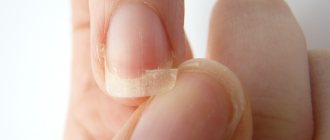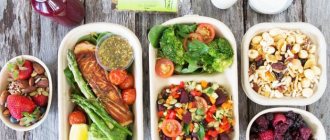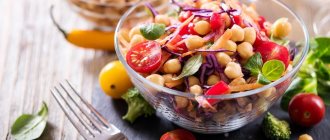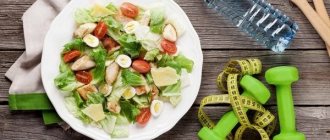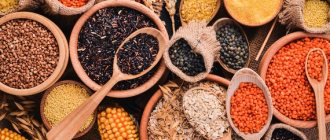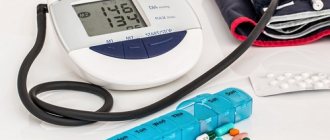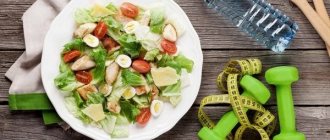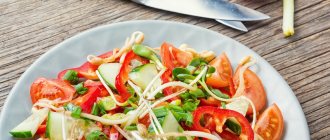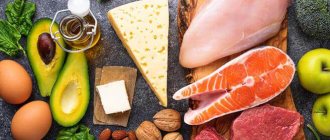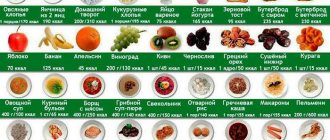By adhering to a meal plan and diet rules, almost everyone was able to lose weight, while filling their plates with high-fat foods every day. At one time, the Atkins diet revolutionized nutrition. What's the secret? Let's find out!
The method is also known as the Atkins protein diet, the menu of which consists of meat and eggs. Carbohydrates from the diet are kept to a minimum, which allows us to call the diet low-carbohydrate. Back in 1972, Dr. Robert Atkins first published a concept that at one time helped him personally get rid of extra pounds.
The diet is based on the theory that proteins and fats can satisfy hunger and satiate the body without carbohydrates. This way, you can stay in fat loss mode because carbohydrate foods cause a high spike in insulin in the blood, inhibiting fat burning.
However, people began to worry about health because of the threat of saturated fats to blood vessels and the heart muscle. Therefore, the cardiologist and founder of the approach modified the details, and the modified Dr. Atkins diet appeared to the world with clear guidance for adding healthy carbohydrates, polyunsaturated fats in combination with protein foods.
In this article you will learn:
- principles of the Atkins diet, features of the stages;
- advantages, disadvantages of the method, contraindications;
- allowed and prohibited foods: a complete table for organizing nutrition using the Atkins method;
- practical part: Atkins diet with daily menu and recipes;
- Tips for maintaining protein nutrition.
The revolutionary diet of Dr. Atkins
The famous Dr. Atkins diet has collected reviews and results from all over the world.
The main idea is to limit carbohydrate intake. The source of energy is the accumulation of fat cells in the body, not glucose. The Atkins diet or Atkins nutrition system is a low-carbohydrate diet developed by cardiologist Robert Atkins. The diet was personally tested by Dr. Atkins on himself to combat his own excess weight.
Just by limiting their carbohydrate intake, many people began to worry about their overall health, especially heart disease and high blood pressure. It is known that high consumption of saturated fat can aggravate these diseases.
So Atkins revitalized his approach and slightly modified the nuances, leaving the general concept unchanged. The Atkins Diet menu has now changed somewhat from simply emphasizing foods high in protein and fat, but is taking a clearer approach to the basic principles of the diet and touting the importance of healthy carbohydrates and fats in combination with protein.
In the 20th century, Dr. Atkins' new revolutionary diet was called the "Hollywood System", which includes four stages:
- Induction;
- Weight loss;
- Transition period;
- Weight maintenance.
Previously, before the Atkins diet, there was nothing like this in nutrition. The author suggested looking at the mechanisms of weight loss differently:
- advantage of metabolic processes - burning fat requires more energy than carbohydrates;
- carbohydrate - breaks down into glucose, saturating muscles and liver with glycogen. The absence of a macronutrient forces the body to use its reserves to produce energy. The source is adipose tissue. This process is called ketosis. The mechanism is also activated when maintaining a ketogenic diet;
- decreased appetite - carbohydrates lead to intense production of insulin for the absorption of glucose. As soon as a person eats sweets, insulin is instantly released into the blood. A sharp decrease in the hormone provokes attacks of hunger, which explains the rapid return of appetite after eating desserts and flour products.
Essence
The Atkins diet is called revolutionary because it practically does not limit the daily caloric intake of the diet. She suggests sharply reducing the consumption of carbohydrate-containing foods, increasing the amount of protein foods and leaving fats on the menu. The famous cardiologist based his method on a scheme for burning energy by the body:
- carbohydrates are a pure source of energy and are easily broken down;
- when eating food rich in carbohydrates, the body burns them, but does not reach fats;
- as soon as the intake of carbohydrates is limited, muscle fibers are next in line for breakdown, but protein foods protect them from this, so the body has no choice but to use up fat reserves, starting the process of ketosis (one of the main concepts of the Atkins diet).
However, this nutritional system is not completely carbohydrate-free, as many believe. The diet will contain foods with a certain amount of carbohydrates, but subject to two conditions: their minimum content and “purity”.
For reference. “Clean” carbohydrates are another concept of diet. They do not contain any impurities (for example, fiber or sweet syrups). The ideal “clean” carbohydrate is sugar. Therefore, in the tables compiled by the doctor, this indicator is displayed in a separate column.
It turns out that the caloric content of the diet does not play an important role, but you will have to start calculating the daily consumption of carbohydrates, and “pure” ones.
The presence of 4 phases is another distinctive feature of this technique:
- The induction phase starts ketosis.
- The weight loss phase brings body weight to the desired result.
- The phase of gradual transition to weight stabilization helps the body adapt.
- The weight maintenance phase allows you to always stay in the desired shape.
Each phase lasts until a certain result is achieved. The varied diet offered by the Robert Atkins diet allows you to stay in phase 4 all your life, as it involves following the principles of proper nutrition.
Basic Rules
The final results in losing excess weight during the Atkins diet directly depend on following the rules:
- reducing carbohydrate portions. The author himself called them “bad guys”;
- conscious control of appetite. Hunger strike and overeating are two enemies that can interfere with weight loss;
- vitamin control. The diet is considered unbalanced, so it is recommended to conduct a blood test to check for vitamin deficiency in the body and use it additionally as prescribed by a doctor;
- physical exercise. It could be walks, home workouts, CrossFit style workouts - it doesn’t matter. You have the right to choose relevant and comfortable types of activity to maintain health and muscle tone;
- compliance with the drinking regime. Pure water helps maintain metabolism, removes waste and toxins from the body. Fluid deficiency negatively affects weight loss.
Reviews and results
O. Zaikina, leading researcher at the Institute of Immunology of the Ministry of Health of the Russian Federation:
“The Atkins diet can only be suitable for absolutely healthy people, as it completely changes the metabolic processes in the body. Its main advantage is the absence of hunger. It’s best to follow this technique in winter or late autumn, when it’s cold outside.”
Yu. Chekhonina, doctor, Research Institute of Nutrition, Russian Academy of Medical Sciences:
“Weight begins to decrease during a diet, that’s a fact. However, if you consume more than 120 g of protein per day (the diet suggests consuming 150 g of protein per day), this can provoke gout, kidney disease or hypertension.”
Reviews from those who have lost weight
Alexander: “I’ve wanted to lose weight for a long time, but I can’t give up meat. The Atkins diet works great for me. With her help, I lost 30 kg in 2 years.”
Olesya: “I couldn’t maintain this diet. A week after it started, my blood pressure dropped sharply, so I had to give up losing weight.”
Daria: “I lost 15 kg in two months, which makes me very happy. I’m hoping to lose another 10 kilos.”
Tatyana: “I decided to try the Atkins diet after giving birth to get rid of 10 extra pounds that didn’t want to go away. On the 2nd week of the diet, I had a breakdown and ate a piece of cake. At this time the weight was 2 kg. The idea continued to eat according to the rules of the first phase. I bought tests to measure the level of ketone bodies. It showed that the ketosis process was not impaired. In the end, I still managed to lose weight.”
Diet phases
The Atkins Diet meal plan has four phases. As you move from one phase to another, you can notice changes in the composition and proportions of the body. The task is to activate and maintain ketosis (the breakdown of fat tissue to provide the body with energy).
Phase I: induction
The first stage starts with just 20 grams of net carbohydrates per day, which come from plant sources.
It is necessary to start the process of ketosis. It is considered difficult in terms of food selection. Phase rules:
- Duration – 14 days, usually this stage lasts about two weeks.
The body adapts, metabolism is reorganized to suit the new nutritional system. There is a drop in glucose levels to a state of hypoglycemia. The body activates the work of growth hormones and adrenaline, which break down adipose tissue into fatty acids, which are processed by the liver. The remains are excreted in the urine.
- A serving of carbohydrates is no more than 20 grams.
It is recommended to give preference to green vegetables, herbs (celery, lettuce, green beans, etc.).
- Formation of a diet according to the principles of fractional nutrition.
Three main meals, 2-3 snacks.
Already in the first week, extra pounds are lost due to the removal of excess water, and swelling is relieved. The duration of “induction” with a large amount of fat can be increased to 4-6 weeks.
The basic rules of this stage are to include protein and fats in every meal and limit your carbohydrate intake to 20 grams. You are encouraged to drink plenty of water, read labels, and constantly look for “hidden” carbohydrates.
The following are acceptable foods that you are allowed to eat during this stage:
- Chicken
- Turkey
- Beef
- Eggs
- Pork
- Lamb dishes
- Duck
- Tuna
- Salmon
- Flounder
- Other types of fish
- Goose
- Shellfish
- Bacon
- Ham
- Seafood
- Cheeses (though moderation is required here as they contain carbohydrates)
- All vegetables are starch-free
- Oils
- Nuts (keep them in moderation as they contain carbohydrates)
- Tea
- Decoction
- Bouillon
- Diet soda
- Coffee
Phase II: Weight Loss
Weight loss continues due to the same mechanism - the use of fat for energy production. Considered the main phase.
- Duration - from 3-5 weeks to several years.
The duration is selected taking into account the initial weight and the process of losing weight. In addition to correctly calculating the calorie deficit in the daily diet, it is necessary to empirically determine the individual carbohydrate intake. There is no single number.
- Determination of carbohydrate norms.
After the induction phase and 20 grams of carbohydrates, it is necessary to gradually increase the portion of 5 g of macronutrients per day and monitor the body’s reactions. As soon as the weight loss process slows down, the amount decreases in identical increments - 5 g. However, nutritionists do not recommend eating less than 50 grams of carbohydrates for a long time.
Physical activity will give an additional boost to increasing metabolism. In combination with a low-carb diet, training will help improve body shape and increase muscle tone.
It is recommended to move on to the next phase when there are 3-6 kg left to the desired weight.
Phase III: Transition Period
The name speaks for itself - losing weight is replaced by maintaining weight. At this time, correct eating habits have already been formed. The goal is to choose the optimal nutrition plan that meets the energy needs for successful study, work, and training. If you return to your previous disordered diet with excess carbohydrates, the lost kilograms will return in the near future. That is why it is important to make the right decision and enjoy life and your new body.
- Duration - from 1 to 3 months.
The portion of carbohydrates gradually increases by 5-7 g of macronutrients per week, weight is controlled. It is allowed to include a new ingredient in the menu that was previously unavailable. We are talking about your favorite sweets or other favorite treat. The main condition is compliance with the portion. Don't forget why you limited yourself before.
Phase IV: Weight Maintenance
Considered to be the easiest phase of the Atkins diet, clean eating becomes a lifestyle choice. Motivation from lost kilograms allows you to continue to eat healthy foods and not relapse. The volume of carbohydrates is maintained at the level experimentally established during the transition phase.
- Duration – has no restrictions.
The diet is also dominated by proteins and fats, but the body leaves the ketosis stage.
Advantages and disadvantages
Advantages:
- guaranteed result;
- gradual weight loss does not pose a health hazard and does not leave stretch marks, since the skin has time to adapt to the new parameters of the body;
- product availability;
- simplicity of the scheme;
- improvement of well-being;
- developing new eating habits, eliminating dependence on food;
- improvement of metabolism;
- easy to carry;
- preservation of muscle mass;
- normalization of insulin and blood sugar levels, thereby preventing heart disease and diabetes.
Flaws:
- duration;
- craving for sweets is uncontrollable;
- unbalanced diet;
- constant carbohydrate counting, use of tables;
- First you need to understand the basic concepts of diet, which are complex biochemical terms: ketosis, “clean” carbohydrates and others;
- an impressive list of contraindications.
Disadvantages also include numerous side effects and health complications that are caused by too much protein in the diet and not enough carbohydrates:
- dehydration;
- decreased performance, brain activity, endurance, concentration;
- renal failure, stone formation;
- ketoacidosis;
- irritability, mood swings;
- dry hair and skin, brittle nails;
- insomnia;
- nausea, pain in the stomach;
- calcium deficiency, which can result in osteoporosis and caries.
If the side effects are mild and do not cause much trouble, you can continue the diet. But, if your health worsens more and more, you need to stop it at least for a while, undergo an examination and consult a doctor.
Contraindications
A low-carbohydrate diet is not suitable for kidney disease due to the high consumption of protein foods, which puts additional stress on the organs. The risk group includes:
- people with diabetes;
- heart disease;
- chronic diseases.
During pregnancy and breastfeeding, a low-carbohydrate diet is strictly prohibited. Especially the first stage. Before introducing a high-protein diet, you should definitely consult with your doctor.
Advantages and disadvantages
The Hollywood power system has a number of advantages:
- ease of creating a menu for the week with your favorite meat products;
- the low-carbohydrate Atkins diet for hypertension helps stabilize blood pressure;
- effective for losing excess weight if the phases are followed;
- not accompanied by a feeling of hunger;
- the principles of healthy eating improve the quality of life and health.
The specific menu and weight loss system is not without its drawbacks:
- macronutrient imbalance (MEM), therefore it is necessary to monitor the level of vitamins in the body;
- systematic tracking of carbohydrates ingested from food, which discourages beginners;
- decreased activity due to glucose deficiency, so the system is not suitable for strength sports;
- disruption of the gastrointestinal tract due to a deficiency of fiber contained in fruits, cereals, and vegetables;
- the risk of developing gout - provoked by the concentration of uric acid (a product of the breakdown of a large number of proteins);
- urolithiasis disease.
Benefits of the Atkins Diet
The first and, perhaps, the most important advantage of the diet is that this nutritional system teaches overweight people to control their diet. In addition, the diet lasts long enough to painlessly accustom the body to eating according to a new pattern. In addition, after several months of following a diet, a new eating habit is developed, and this minimizes the risk of relapse.
Many people want to achieve quick results, so they choose the latter between the Atkins system and the express diet. But rapid weight loss usually means the same rapid return of lost pounds, as well as aesthetic problems in the form of saggy skin and flabby muscles. Eating according to the American cardiologist's system will protect against such side effects.
In addition, there is an opinion that this nutrition program is useful not only for weight loss. Some researchers consider this diet to be beneficial for cardiovascular health, lowering cholesterol, preventing diabetes and hormonal imbalances. Although not all doctors share this opinion.
Allowed foods on the diet
A list of allowed products has been compiled based on the specific phases of the launch of the ketosis mechanism.
Phase I
Let's look at the suitable products by category that you are allowed to consume in the first phase:
| Food group | Examples |
| Fish | Sea or river, white or red |
| Bird | Turkey, chicken, duck, quail |
| Seafood | Squid, mussels, shrimp, sea cocktail, oysters, scallops, crabs |
| Meat | Beef, veal, lamb, rabbit, pork |
| Eggs | Chicken, quail |
| Cheeses | Feta, mozzarella, Russian, Parmesan, Gouda |
Vegetable consumption is limited. The daily carbohydrate intake is 20 g. This is about 100 - 200 grams of green vegetables:
- celery;
- salad;
- spinach;
- cabbage;
- greenery;
- cucumbers;
- green beans.
Salads and hot dishes are seasoned with vegetable oils, adding spices and salt is allowed.
Phase II
The list of the first phase is supplemented by the introduction of additional ingredients:
- nuts: walnuts, almonds, cashews, hazelnuts, pistachios;
- berries: watermelon, strawberries, raspberries, currants;
- vegetables: broccoli, tomatoes.
A prerequisite is tracking incoming carbohydrates, changing the amount of macronutrients when the weight loss process slows down.
Phase III
The third phase allows you to introduce starchy vegetables into the diet:
- sweet potato;
- carrot;
- potato;
- beet.
Fruits are added in small quantities:
- apples;
- mango;
- kiwi;
- banana.
Sources of slow carbohydrates:
- cereals;
- Brown rice;
- barley;
- buckwheat.
It is important to distribute the amount of carbohydrates for each meal, and not eat at once.
The menu of the final phase is formed according to the previous stage of the diet with adaptation to individual needs (training, work) and food preferences.
Authorized Products
Tables of foods indicating KBZHU will help you create a menu and decide on portion sizes to maintain the Atkins diet. This is especially true for the induction phase, so as not to get confused when forming a food basket.
| Squirrels | Fats | Carbohydrates | Calories (kcal) | |
Vegetables, greens | ||||
| eggplant | 1,2 | 0,1 | 4,5 | 24 |
| zucchini | 0,6 | 0,3 | 4,6 | 24 |
| cabbage | 1,2 | 0,2 | 2,0 | 16 |
| cucumbers | 0,8 | 0,1 | 2,8 | 15 |
| radish | 1,2 | 0,1 | 3,4 | 19 |
| arugula | 2,6 | 0,7 | 2,1 | 25 |
| iceberg lettuce | 0,9 | 0,1 | 1,8 | 14 |
| celery | 0,9 | 0,1 | 2,1 | 12 |
| tomatoes | 0,6 | 0,2 | 4,2 | 20 |
| spinach | 2,9 | 0,3 | 2,0 | 22 |
| sorrel | 1,5 | 0,3 | 2,9 | 19 |
Mushrooms | ||||
| fresh champignons | 4,3 | 1,0 | 1,0 | 27 |
Cheeses, cottage cheese | ||||
| Adyghe cheese | 18,5 | 14,0 | 0,0 | 240 |
| brie cheese | 21,0 | 23,0 | 0,0 | 291 |
| Camembert cheese | 21,0 | 23,0 | 0,0 | 291 |
| mozzarella cheese | 18,0 | 24,0 | 0,0 | 240 |
| cottage cheese 0% (low fat) | 16,5 | 0,0 | 1,3 | 71 |
| cottage cheese 5% | 17,2 | 5,0 | 1,8 | 121 |
| cottage cheese 9% (bold) | 16,7 | 9,0 | 2,0 | 159 |
Meat products | ||||
| pork | 16,0 | 21,6 | 0,0 | 259 |
| pork tenderloin | 19,4 | 7,1 | 0,0 | 142 |
| beef | 18,9 | 19,4 | 0,0 | 187 |
| beef tongue | 13,6 | 12,1 | 0,0 | 163 |
| veal | 19,7 | 1,2 | 0,0 | 90 |
| mutton | 15,6 | 16,3 | 0,0 | 209 |
| rabbit | 21,0 | 8,0 | 0,0 | 156 |
| jamon | 34,8 | 16,1 | 1,3 | 241 |
Bird | ||||
| chicken | 16,0 | 14,0 | 0,0 | 190 |
| turkey | 19,2 | 0,7 | 0,0 | 84 |
Eggs | ||||
| omelette | 9,6 | 15,4 | 1,9 | 184 |
Fish, seafood | ||||
| red mullet | 19,4 | 3,8 | 0,0 | 117 |
| pink salmon | 20,5 | 6,5 | 0,0 | 142 |
| dorado | 18,0 | 3,0 | 0,0 | 96 |
| carp | 16,0 | 5,3 | 0,0 | 112 |
| sprat | 17,1 | 7,6 | 0,0 | 137 |
| shrimps | 22,0 | 1,0 | 0,0 | 97 |
| pollock | 15,9 | 0,9 | 0,0 | 72 |
| mackerel | 18,0 | 13,2 | 0,0 | 191 |
| zander | 19,2 | 0,7 | — | 84 |
Non-alcoholic drinks | ||||
| green tea | 0,0 | 0,0 | 0,0 | — |
Juices, compotes | ||||
| dried fruit compote without sugar | 0,8 | 0,0 | 14,2 | 60 |
Recommendations
In order not to violate the basic principles of the diet, use the recommendations of specialists.
General Tips
Atkins tables indicating “net” carbohydrates in foods should always be in front of your eyes. Counting is required. Their quantity should be evenly distributed among meals. You cannot eat all 20 g of “pure” carbohydrates at one time, which will cause a sharp jump in blood sugar.
Side dishes of cereals and potatoes are replaced with vegetables in any form. Coffee is not a prohibited food and does not contain “pure” carbohydrates, but it lowers the level of insulin in the blood, which is unacceptable. Therefore, you need to either limit it or find an analogue (green tea, chicory).
Be sure to exercise throughout your weight loss journey. Protein foods and training will allow you to become the owner of an ideal figure. Skipping phases is strictly prohibited.
"Hidden" carbohydrates
- Sauces
They contain starch, flour, sugar, and therefore are high-carbohydrate products. For example, in 1 tomato there are only 2 g of “pure” carbohydrates, and in tomato paste there are already 20 g. In mustard - also 20 g, in soy sauces - up to 25 g.
- Breading
The Atkins diet is good because it allows the consumption of fish and meat, as well as various products made from them. You can even fry them. But as soon as you do it in batter or breading, the carbohydrate content of the dish begins to go off scale. It is better to abandon them, at least in the first two phases.
- Ground meat
Bread is often added to store-bought minced meat, and this is a very high-carbohydrate product that is prohibited for those losing weight.
- Medicines
Liquid syrups and suspensions often contain glucose, as do the gelatin shells of capsules, and tablets almost always contain starch.
Vitamins
Some experts argue that the Atkins diet, due to an unbalanced diet, leads to vitamin deficiency, so it is necessary to regularly take multivitamin complexes. However, the developer of the method himself did not think so and in his book gave detailed instructions on how to avoid a lack of nutrients through approved products:
- to eliminate vitamin A deficiency in the diet, you need to include fish oil, liver, butter, onions, parsley, sorrel and spinach as often as possible, and vegetables - bell peppers and cabbage;
- B vitamins: pork, nuts, parsley and lettuce, butter;
- C: pepper and citrus fruits, wild garlic, dill, parsley, onions;
- D: cottage cheese, hard cheese, butter, yolk, permitted seafood, fish, caviar, fish oil;
- E: eggs, all types of oils, liver;
- F: nuts, fish and pork fat, vegetable oil, shellfish;
- K: spinach and lettuce greens, all varieties of cabbage, olive oil;
- P: nuts, peppers, green and black tea, all varieties of cabbage, tomatoes.
Indicator strips
Indicator strips are a tool that allows you to determine the presence of ketosis in the body (they show the level of ketone bodies in the urine). They are freely available in any pharmacy and are inexpensive. Brands can be very different: Acetontest, Ketostix, Ketofan, Uriket, etc. They are one of the means of monitoring weight loss on the Atkins diet. They are used in phases 1 and 2, when fat breakdown is the main process and you need to know for sure whether it is running.
If the indicator strips show from 2 to 10 mmol/l of ketones in the urine, the weight loss process is going according to plan, there is no need to adjust the diet. If it is elevated, increase the amount of water you consume. If the color of the indicator strip does not change within several days, you need to eat less carbohydrate foods.
There is no urgent need to use indicator strips; most often, scale readings are sufficient. But for more precise control of the progress of ketosis, they can be useful.
If you understand the essence of the diet, understand how it works, and follow all its principles strictly, you can say goodbye to the problem of excess weight forever.
Partially restricted or prohibited products
The protein diet was carefully developed by the author and went through modernization in order to launch the processes necessary for weight loss without harm to health. During the diet, the following are completely excluded:
- sugar, sugar-containing ingredients;
- soda, packaged drinks;
- bakery products, cookies, desserts, chocolate;
- sauces (mayonnaise, mustard, ketchup, etc.);
- alcohol.
Below are foods whose consumption should be strictly controlled.
| Squirrels | Fats | Carbohydrates | Calories (kcal) | |
Vegetables, greens | ||||
| broccoli | 3,0 | 0,4 | 5,2 | 28 |
| potato | 2,0 | 0,4 | 18,1 | 80 |
| corn | 3,5 | 2,8 | 15,6 | 101 |
| carrot | 1,3 | 0,1 | 6,9 | 32 |
| salad pepper | 1,3 | 0,0 | 5,3 | 27 |
| beet | 1,5 | 0,1 | 8,8 | 40 |
Fruits | ||||
| oranges | 0,9 | 0,2 | 8,1 | 36 |
| bananas | 1,5 | 0,2 | 21,8 | 95 |
| pomegranate | 0,9 | 0,0 | 13,9 | 52 |
| grapefruit | 0,7 | 0,2 | 6,5 | 29 |
| kiwi | 1,0 | 0,6 | 10,3 | 48 |
| lemons | 0,9 | 0,1 | 3,0 | 16 |
| tangerines | 0,8 | 0,2 | 7,5 | 33 |
| pomelo | 0,6 | 0,2 | 6,7 | 32 |
| apples | 0,4 | 0,4 | 9,8 | 47 |
Berries | ||||
| grape | 0,6 | 0,2 | 16,8 | 65 |
Nuts, dried fruits | ||||
| peanut | 26,3 | 45,2 | 9,9 | 551 |
| walnuts | 15,2 | 65,2 | 7,0 | 654 |
| cashew | 25,7 | 54,1 | 13,2 | 643 |
| pumpkin seeds | 24,5 | 45,8 | 4,7 | 556 |
| dates | 2,5 | 0,5 | 69,2 | 274 |
| pistachios | 20,0 | 50,0 | 7,0 | 556 |
Cereals, porridge | ||||
| buckwheat | 4,5 | 2,3 | 25,0 | 132 |
| oatmeal | 3,2 | 4,1 | 14,2 | 102 |
| Wheat groats | 11,5 | 1,3 | 62,0 | 316 |
| white rice | 6,7 | 0,7 | 78,9 | 344 |
Dairy | ||||
| milk 1% | 3,3 | 1,0 | 4,8 | 41 |
| milk 2.5% | 2,8 | 2,5 | 4,7 | 52 |
| kefir 1% | 2,8 | 1,0 | 4,0 | 40 |
| sour cream 10% (low-fat) | 3,0 | 10,0 | 2,9 | 115 |
| sour cream 20% (medium fat content) | 2,8 | 20,0 | 3,2 | 206 |
Cheeses, cottage cheese | ||||
| parmesan cheese | 33,0 | 28,0 | 0,0 | 392 |
| ricotta cheese | 11,0 | 13,0 | 3,0 | 174 |
Fish, seafood | ||||
| Red caviar | 32,0 | 15,0 | 0,0 | 263 |
What does the diet consist of?
The fundamental difference between the Atkins program and many other weight loss diets is that it does not have a clearly defined menu for the week or month. Instead of strict restrictions, the author offers two lists of products: the first is allowed food, the second is prohibited. In addition, the doctor ranked the foods and built his own food pyramid from them.
The base of the pyramid consists of protein foods, which should be the most in the diet. This means that poultry, beef, pork, eggs, fish, and seafood should appear on the table every day.
The second level of the food rating is vegetables. They can also be eaten often and in large quantities. True, you still have to give up starchy types. The best choices are spinach, cauliflower, Brussels sprouts, cucumbers, tomatoes, peppers, broccoli, zucchini, bell peppers, jalapenos, lettuce, asparagus, carrots, and eggplant.
At the third stage of the Atkins food pyramid are fruits and berries. Raspberries, blueberries, pears, avocados and much more make up the basic set. People whose daily routine includes physical activity can expand their fruit and berry selection with cherries and apples.
The fourth step is food that should be consumed in moderation. These are dairy products, vegetable oils, nuts and legumes. Among the allowed products: olive, sunflower, coconut, grape and nut oils, sour cream, cream, cheeses, including blue mold, goat, cheddar, feta, Swiss, Parmesan.
The top of the pyramid is products that, if they appear in the diet, will be in very limited quantities. We are talking about flour products. On a diet you can afford, but very rarely, pasta made from durum wheat flour. Pastries, bread made from wheat flour, porridge and all other high-carbohydrate foods are prohibited.
At any stage of the diet, you can consume herbs and spices such as curry, cinnamon, thyme, cayenne pepper, cumin, black pepper, garlic.
Table of carbohydrate content in allowed foods
| The product's name | Carbohydrates (g/100 g) |
| Beet | 9 |
| Beans | 60,3 |
| Bulb onions | 9,3 |
| Carrot | 9,6 |
| Radish | 3,4 |
| Sorrel | 3 |
| Zucchini | 3,4 |
| Tomatoes | 3,8 |
| Arugula | 3,7 |
| White cabbage | 5,8 |
| Spinach | 3,6 |
| Broccoli | 6,6 |
| cucumbers | 3 |
| Eggplant | 5,7 |
| Zucchini | 3,3 |
| Asparagus | 3,9 |
| Green pea | 14,4 |
| Cauliflower | 5 |
| Celery root | 9,2 |
| Shallot | 5,7 |
| Celery (stalks) | 3 |
| Chinese cabbage | 2,2 |
| bell pepper | 6,3 |
| Champignon | 3,1 |
| Green olives | 3,5 |
| Tomato paste | 18,9 |
| Red meat | 0 |
| Poultry meat | 0 |
| Offal | 0 |
| Salo | 0 |
| All types of fish | 0 |
| Red caviar | 3 |
| Pollock caviar | 0 |
| Squid | 0 |
| Shrimps | 0 |
| Mussels | 3,7 |
| Sea kale | 9,8 |
| Crab sticks | 9,8 |
| Mayonnaise | 4,7 |
| Vegetable oil | 0 |
| Rye bread | 48,3 |
| Wheat bread | 48,5 |
| Kefir 1% | 4,1 |
| Milk 1% | 4,9 |
| Whole milk | 4,7 |
| Butter | 1,3 |
| Cream | 4 |
| Different types of cheese | 0,5-3,2 |
| Chicken egg | 0,7 |
| Corn | 47,3 |
| Rice | 81,7 |
| Wheat porridge | 75,3 |
| Buckwheat | 71,5 |
| Oatmeal | 67,5 |
| Honey | 82,4 |
| Sugar | 99,8 |
| Potato starch | 91 |
| Gelatin | 0 |
| Chocolate | 52,4 |
| Almond | 21,6 |
| Peanut | 16,1 |
| Walnut | 13,7 |
| Cashew | 30,2 |
| Hazelnut | 16,7 |
| Pistachios | 27,5 |
| Pumpkin seeds | 10,7 |
| Sunflower seeds | 20 |
| Kiwi | 14,7 |
| Apple | 13,6 |
| Plum | 11,4 |
| Dates | 75 |
| Lemons | 5,4 |
| Melon | 8,2 |
| Bananas | 22,6 |
| Cherry | 16 |
| Grape | 17,1 |
| Orange | 11,7 |
| Apricot | 11,1 |
| Mandarin | 8,1 |
| Persimmon | 33,5 |
| A pineapple | 13,1 |
| Grapefruit | 10,7 |
| Watermelon | 7,5 |
| Pomegranate | 18,7 |
| Black currant | 15,4 |
| Blueberry | 14,5 |
| Strawberry | 7,7 |
| Raspberries | 11,9 |
| Orange juice | 10,7 |
| Tomato juice | 4,2 |
| Beer | 4,6 |
| Dry wine | 0,4 |
| Semi-dry wine | 1,5 |
| Champagne | 8 |
Atkins diet menu
Like any dietary restriction, the Atkins diet is based on individual calorie needs, so the 14-day menu and table do not have specific gram portions. Relevant for the induction phase.
| Day | Eating | Products, dish |
| 1 | Breakfast | Omelette with ham and cheese |
| Dinner | Baked chicken fillet in spices | |
| Afternoon snack | Vegetable salad seasoned with sour cream | |
| Dinner | Vegetable stew with veal | |
| 2 | Breakfast | Whole grain bread with cheese, ham, cucumbers |
| Dinner | Pumpkin puree soup, seeds | |
| Afternoon snack | Ryazhenka or yogurt without additives | |
| Dinner | Fish steak, vegetable salad | |
| 3 | Breakfast | Cottage cheese with berries |
| Dinner | Boiled turkey fillet with spices | |
| Afternoon snack | Yogurt without additives | |
| Dinner | Fish with boiled green beans | |
| 4 | Breakfast | Omelette with cheese, bacon, herbs |
| Dinner | Pork cutlets, stewed vegetables | |
| Afternoon snack | Whole grain bread with tuna in its own juice | |
| Dinner | Baked zucchini in sour cream | |
| 5 | Breakfast | Cheesecakes with raisins, sour cream |
| Dinner | Chicken fillet, stewed cabbage | |
| Afternoon snack | Boiled eggs, cucumber, lettuce | |
| Dinner | Stuffed cabbage rolls in tomato sauce | |
| 6 | Breakfast | Scrambled eggs with chicken fillet and cheese |
| Dinner | Pumpkin milk porridge | |
| Afternoon snack | Yogurt without additives, boiled egg | |
| Dinner | Vegetable stew, beef steak | |
| 7 | Breakfast | Cottage cheese with banana, sour cream |
| Dinner | Ukha, vegetable salad with sour cream | |
| Afternoon snack | Kefir | |
| Dinner | Steamed salmon | |
| 8 | Breakfast | Muesli with yogurt without additives |
| Dinner | Borsch, boiled pork | |
| Afternoon snack | Salmon, cheese, whole grain bread | |
| Dinner | Stuffed peppers | |
| 9 | Breakfast | Omelet with ham, cucumbers |
| Dinner | Vegetable soup, boiled chicken fillet | |
| Afternoon snack | Ryazhenka or yogurt without additives | |
| Dinner | Stewed cabbage with beef | |
| 10 | Breakfast | Curd casserole, sour cream |
| Dinner | Cheese soup with salmon, tomatoes | |
| Afternoon snack | Nuts | |
| Dinner | Chicken rolls with mushrooms | |
| 11 | Breakfast | Vegetable salad, boiled eggs |
| Dinner | Pork with cheese, tomatoes | |
| Afternoon snack | Yogurt without additives | |
| Dinner | Fish cutlets, vegetable salad | |
| 12 | Breakfast | Cottage cheese with dried fruits |
| Dinner | Vegetable casserole with chicken fillet | |
| Afternoon snack | Cheese with whole grain bread | |
| Dinner | Chicken cutlets with boiled green beans | |
| 13 | Breakfast | Omelette with vegetables |
| Dinner | Fish soup, vegetable salad | |
| Afternoon snack | Nuts, berries | |
| Dinner | Fish baked in sour cream | |
| 14 | Breakfast | Omelet with cheese, salmon |
| Dinner | Vegetable soup with chicken | |
| Afternoon snack | Vegetable salad | |
| Dinner | Steamed turkey with asparagus |
To build a menu for subsequent phases, it is necessary to increase the amount of carbohydrates from 5 to 10 g.
General tips for creating menus for stages 2, 3 and 4
The menu of the following phases differs from the previous one in the relative diversity of the diet. Now more carbohydrates are added to the diet. You can create your own meals based on the following diagram:
- Breakfast: decaffeinated drink, low-fat dairy products.
- Lunch: 100-150 g of meat or fish, 200-300 grams of vegetables. Should be no earlier than three hours after breakfast.
- Snacks: Light but nutritious. These can be fermented milk products, caffeine-free drinks, vegetables, baked meat, ham, cheese (serving up to 50 g).
- Dinner: 100-150 grams of any meat, fish or seafood, vegetables, eggs, kefir, cottage cheese.
When creating a menu, you can focus on your own dietary preferences and products, using the products available in the refrigerator.
Atkins Diet Recipes
To make the Atkins diet seem less intimidating, below are recipes that will help make your 14-day menu more varied.
Beef tongue casserole
An exquisite delicacy for the holiday table.
Beef tongue casserole
Recipe No. 1
Cooking method:
- Cut the boiled tongue into strips.
- Cut the onion and mushrooms into medium cubes and fry.
- Chop the greens. Mix the prepared ingredients.
- Season the dish with sour cream, spices, stir. Place in a baking dish. Sprinkle with grated cheese.
- Place in an oven preheated to 180 degrees for 25 minutes.
Ingredients: - boiled beef tongue - 400 g; — champignons – 200 g; - sour cream - 120 g; — onion – 1 pc.; — hard cheese – 150 g; — dill – 1 bunch; - salt, pepper - to taste.
Hearty scrambled eggs
The best way to start the day is to prepare a delicious breakfast!
Hearty scrambled eggs
Recipe No. 1
Cooking method:
- Wash the vegetables, cut into large slices and cubes. Fry in butter.
- Beat in 4 eggs, sprinkle with grated cheese. Close the lid and cook over low heat until done.
- Before serving, garnish with chopped fresh herbs.
Ingredients: • chicken egg – 4 pcs.; • tomato – 1 pc.; • Brussels sprouts – 3 inflorescences; • green beans – 100 g; • bell pepper – 1 pc.; • boiled chicken fillet – 120 g; • hard cheese – 100 g; • butter – 20 g; • salt, spices, herbs - to taste.
Diet for blood group 1 “Hunter”
The author of the diet conventionally calls people with the first blood group hunters. This blood group is the oldest; in the process of evolution, other groups originated from it. Around the world, there are about 33.5% of people with the first blood group. People with this blood are considered strong and self-sufficient and have leadership qualities. In America they are classified as type O (first group).
Main characteristics of “hunters”:
- Strong immune and digestive system. The body is created for high-quality metabolism and has a high ability to extract nutrients (carbohydrates, minerals, vitamins, fats and other biological elements necessary for cell function).
- Weak ability to adapt to changing environmental conditions and innovations in the usual diet. Tendency to allergies (strong immunity can attack the body’s own cells).
- Human hunters are prone to diseases such as arthritis (inflammation of the joints), stomach and duodenal ulcers (due to increased acidity of gastric juice), and allergies. Possible disturbances in the process of hemocoagulation.
People with the first blood group are advised to take vitamins and minerals such as manganese, potassium, iodine, as well as vitamin K and B vitamins. It is possible to take pancreatic enzymes. You should avoid taking additional vitamins A and E.
People classified as “hunters” must follow the following recommendations:
- To launch metabolic processes in full force and with their help get rid of excess weight, you need to exclude all wheat-based products from the menu. The same applies to legumes, corn, and lentils. As a result, nothing will interfere with the normal production of insulin, and metabolism will accelerate.
- You should avoid any cabbage except broccoli. The same applies to all oat-based dishes. Once ingested, they interfere with the normal production of thyroid hormones, and metabolism slows down.
- All products that contain iodine must be on the menu. For example, seaweed, spinach, seafood. You need to add salt to your dishes with salt enriched with iodine.
- To normalize the functioning of the thyroid gland, you need to include foods such as radishes, radishes and daikon in your diet. You can put them through a juicer along with carrots.
- Eating red meat and liver can speed up your metabolism.
You need to engage in active sports. As for the use of medications, you should take acetylsalicylic acid with extreme caution.
Diet for people with blood type O: do's and don'ts
| You can eat | Can't eat | Neutral products |
| Ground beef, turkey, veal, lamb, beef, liver and heart | Lard, pork, goose meat, bacon and ham, ham | Rabbit meat, duck, broiler chickens, eggs, chickens |
| Sturgeon, halibut, pike, algae, trout, hake, salmon, mackerel, cod | Herring (marinated and salted), smoked red fish, catfish meat, caviar | Representatives of crustaceans, squid, smelt, perch, tuna, pike perch, carp, flounder, eel |
| — | Cheeses (processed and made from cow's milk), whey, sour cream, cream, kefir, ice cream, goat's milk | Curd cheeses, homemade cottage cheese, sheep's milk cheeses |
| Pumpkin seeds, walnuts | Poppy, pistachios, peanuts | Hazelnuts, pine nuts, sunflower seeds, almonds |
| Olive and linseed oil | Corn, cottonseed, soybean and peanut oil | Sunflower oil, butter, margarine, cod liver oil |
| Soy milk, soy cheese, spotted beans | Beans (lentils) | Peas (in pods), beans (soybeans, green peas, black beans), beans (white and green beans) |
| Curry, parsley | Vanilla, ketchup, nutmeg, black pepper, vinegar (apple, white, wine), pickles, marinade, cinnamon | Bay leaves, sugar, caraway seeds, dill, mustard, cloves, fruit-based jams and jelly, fennel seeds, mayonnaise, horseradish, paprika, honey and chocolate |
| — | Semolina, pasta, corn (cobs, porridge, bread), muesli, wheat (cereals, bread, any baked goods), oatmeal and oatmeal cookies | Barley groats, buckwheat and buckwheat flour, pearl barley, rye, rice groats and rice wafers, millet, rye flour (breads and bread made from it) |
| Cabbage (kohlrabi and broccoli), watercress, turnips, hot peppers, parsnips, beets (leaf), chicory, spinach, pumpkin, turnips, sweet potatoes, ground potatoes. | Cabbage (white cabbage, Chinese cabbage, cauliflower, Brussels sprouts, leaf cabbage), potatoes, champignons, rhubarb | Oyster mushrooms, zucchini, feather onions, carrots, tomatoes and cucumbers, beets, asparagus, radishes and turnips, rutabaga, lettuce |
| Tea with rose hips, linden, dandelions, parsley | Tea with St. John's wort, burdock, coltsfoot, strawberries | Tea with hawthorn, licorice, mint, raspberry, thyme, valerian, chamomile, ginseng, echinacea |
| Apples, cherries, plums, cherry plums, figs, prunes | Avocados, blackberries, oranges, coconuts, olives, strawberries, tangerines, melon | Watermelon, pineapple, barberry, banana, lingonberry, cherry, grapes, grapefruit, blueberry, pomegranate, raisins, kiwi, cranberry, lemon, raspberry, nectarine, peaches, currant, blueberry, persimmon |
| — | Vodka, tincture, cognac, coffee, cola, lemonade, black tea | Green tea, beer, wine (red and white). |
Weekly menu for people with blood type O
| Breakfasts (first and second) | Lunches and snacks | Dinner | |
| Monday | 1st breakfast: buckwheat with soy milk, soy cheese, tea with rosehip. 2 breakfast: apple | Beef chop, salad with olive oil (broccoli + carrots) Snack: a handful of walnuts | Boiled mackerel, greens |
| Tuesday | 1st breakfast: Barley porridge, boiled egg (2 pcs.), Tea with rosehip. 2 breakfast: figs | Grilled vegetables and lamb, salad (spinach + beet leaves) Snack: a handful of walnuts | Baked trout fillet with lemon sauce dressing, salad (baked beets + olive oil) |
| Wednesday | 1 breakfast: soy cheese, rye flour bread, egg (2 pcs.), rose hip tea. 2nd breakfast: salad (pumpkin seed + seaweed) | Spotted beans with fried veal, salad (ground potatoes) Snack: cherry juice | Baked pike, herb salad (leeks + parsley + watercress) |
| Thursday | 1st breakfast: barley porridge with soy milk, soy cheese, tea with rosehip. 2 breakfast: plums | Baked turkey with prunes, stewed pumpkin with herbs, greens Snack: a handful of walnuts | Grilled halibut, sweet potato and asparagus |
| Friday | 1st breakfast: Rice porridge, grapefruit (1/2), tea with rosehip. 2 breakfast: persimmon | Stewed liver with onions, stewed vegetables (zucchini + peppers + carrots) Lunch: a handful of walnuts | Lightly salted herring fillet, salad (cucumber + tomato) |
| Saturday | 1 breakfast: soy cheese, rye bread, peaches (2 pcs). 2nd breakfast: a glass of tomato juice. | Beef heart with onions and carrots, salad (kohlrabi cabbage + greens). Snack: a handful of almonds. | Baked hake, boiled green peas, salad (radish + cucumber + greens). |
| Sunday | 1 breakfast: boiled egg (2 pcs.), soy cheese, rye bread, linden tea. 2 breakfast: kiwi | Beef cutlets, zucchini-carrot puree, green salad. Snack: a handful of hazelnuts. | Stewed cod, stewed vegetables, salad (prunes + beets). |
Find out more: diet according to blood type 1
In case of failure
Due to the abundance of protein products, breakdowns are practically excluded. However, in the first stages of restrictions, the body may malfunction, succumbing to the temptations of habitual eating behavior. To help avoid breakdowns:
- before the start of the first phase, gradually reduce carbohydrate intake;
- remove tempting, harmful foods;
- walk in the fresh air more often;
- learn to identify true hunger from false hunger;
- do not forget about the drinking regime;
- if a breakdown occurs, return to the diet without additional calorie restrictions.
Who is not suitable for the Atkins diet?
The Atkins diet is not the best choice for athletes who perform a high volume of exercise or those who frequently train at very high intensity. Since high-intensity exercise relies heavily on carbohydrates for fuel, if your carbohydrate stores and intake are reduced, you are likely to see a loss in performance and experience problems during your workouts.
You can still use some of the approaches practiced by the Atkins diet strategy, such as choosing low-glycemic index carbohydrates, but should also increase your total carbohydrate intake above the amount recommended by the diet.
Less than 100 grams of carbohydrates (assuming there are no long periods of consuming large amounts of carbohydrates) will simply not be enough for you to maintain the performance that you as an athlete expect from your body.
Many reviews of the Atkins diet say that the main disadvantage of this diet is that you, in a sense, “count.” While this doesn't involve strict calorie counting, you'll still have to track carb grams, which can make some people feel restricted and make them want to find a diet that has a more free-flowing approach.
Adviсe
Recommendations to help transition and maintain a low-carb diet:
- when counting carbohydrates in a product, you must be guided by tables of calorie content of products and study the information on the product label;
- Replacing high-carbohydrate side dishes with vegetable dishes will help you maintain your caloric intake and keep nutrients under control;
- the diet has analogues that may be interesting - keto nutrition or the Kremlin diet;
- When choosing carbohydrates, it is recommended to give preference to foods with a low glycemic index to minimize fluctuations in insulin in the blood. This promotes continuous weight loss;
- Reducing carbohydrates does not equal reducing caloric intake. Excessive calorie deficit leads to a slowdown in metabolic processes and weight loss, leading to health problems;
- workouts are the best assistant for losing weight, maintaining tone and vigor!
In order for Dr. Atkins' diet to bring the desired result in weight loss and be accompanied by a good mood, it is important to take a responsible approach to choosing workouts, creating a menu, and also not to forget about the important rule in losing excess weight - get enough sleep and recover. Good luck in achieving your goals!
You may also be interested in:
- paleo diet - what is it;
- low-carbohydrate diet - benefits and harms;
- intermittent or periodic fasting - schemes and rules;
- sports diet for men - how to burn fat and make your body sculpted.
What experienced people say about diet
Reviews of the Atkins diet are very controversial. Much depends on the lifestyle of the person losing weight. For example, a housewife who looks after two small children is uncomfortable without carbohydrates. Such women often complain of weakness and depression, problems with bowel movements.
But many find a way out by modifying the diet to suit themselves. For example, they add cereals and flour to the diet. Within reason, of course. Yes, the weight comes off more slowly. But the result is still there.
But for people who have a strong character and regularly exercise, it is easier to tolerate the diet. However, they also note that at first, constantly counting carbohydrates and monitoring portion weights is tiring. Although, reviews of those who have lost weight indicate that over time you get involved. And you evaluate many dishes “by eye”.
Although the Atkins diet is considered one of the safest low-carb weight loss programs, the body still needs help during this period. The author of the method himself recommended taking vitamin complexes. Especially during the first stage of the diet. It is important that the supporting medications contain chromium, selenium, vanadium, and pantothenic acid. These substances affect metabolic processes and the intensity of the “plumb line”.
Overall effectiveness of the Atkins diet
Since Atkins changed its approach to the diet, it has become healthier and is now a long-term diet for healthy weight loss. In modern society, people eat too many processed foods and this diet basically eliminates them. The carbohydrates you consume on the Atkins diet are the same carbohydrates that our ancestors ate long ago and are the most natural.
To ensure that the Atkins diet is accompanied not only by weight loss, but also by a good mood and energy levels, choose your workouts responsibly and treat yourself to pleasant things from time to time, for example, going for a massage.
Fish recipes
When presenting fish recipes, the following tips should be given:
- Try to follow the advice and include fatty sea fish in your diet. It is rich in omega-3 fatty acids. This will provide the organs with necessary and useful substances that will help maintain healthy skin, hair, cardiovascular system, and nervous system.
- Heat treatment of fish should not be too long. The cooking time here is shorter than for meat. But you need to remember about the parasites that live inside fish, especially freshwater ones. Therefore, you should make sure that the fish dish is ready and does not contain anything that will cause serious harm to the human body.
- You should not roll the fish in flour - it will add carbohydrates that will be difficult to account for. But by adding a small amount of vegetable oil or, better yet, butter, you can add a certain taste.
Mackerel with dill and tomatoes.
Cooking:
- Gut the mackerel and rinse.
- Salt inside and out. For those who do not like the strong smell of fish, you should get rid of it partially. This is easy to do if you sprinkle lemon juice on the carcass inside and out. You can also lightly coat the inside of the fish with mustard. But don't overuse it.
- Next, cut the tomatoes into circles.
- Rinse the dill and chop coarsely, and do not throw away the thick stems. they should also be cut.
- Baking is done in foil. To do this, place the fish on it. Place chopped dill inside. Place tomato rings on top. Wrap in foil. It should not be molded too tightly so that the juice does not leak out. And put it in the oven for baking. Moreover, the temperature should not be lower than 2000 C.
Sea fillet with mushrooms and cheese.
Cooking:
- Place the fillet on parchment or foil.
- Add salt.
- Place mushrooms cut into slices. If you wish, you can pre-fry them in vegetable oil with onions. Or you can put raw ones and put pieces of butter on top.
- Place slices of cheese on top.
- Wrap in parchment or foil and place in the oven to bake.
- Let stand for at least 20-25 minutes in a preheated oven.

